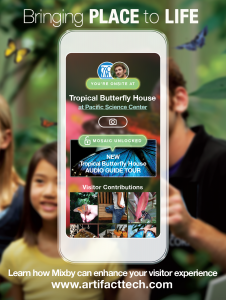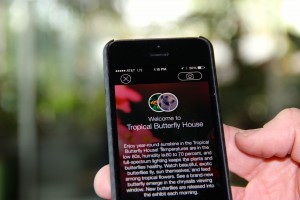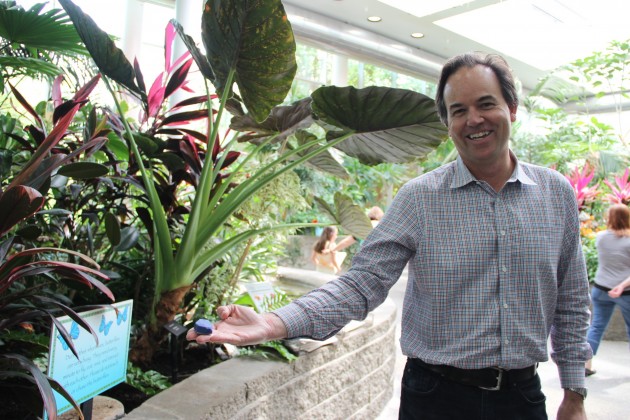by Joe Kleiman
Museums continue to pursue new ways to integrate smartphones and tablets into their exhibits and venues. Techniques have ranged from static podcast tours to QR codes on exhibit signage. Seattle-based Artifact Technologies has met the challenge from a different angle. Its Mixby platform alerts the mobile device, delivering location relevant content. We talked to Artifact CEO Greg Heuss about how Mixby operates.
Mixby uses digitally ‘fenced’ areas to identify the user’s real-world location. Built-in GPS is an option to build area networks; however, it is not accurate when mapping small, precise locations or reliable when users are inside buildings.
 Heuss explained that Mixby supplements GPS with BLE beacons. They are comprised of small modules about the size of an egg, a small battery and a low energy Bluetooth (BLE) transmitter. Once the transmitter detects a Bluetooth signal from a mobile device running Mixby, data is sent to the phone using either cellular or WiFi signals.
Heuss explained that Mixby supplements GPS with BLE beacons. They are comprised of small modules about the size of an egg, a small battery and a low energy Bluetooth (BLE) transmitter. Once the transmitter detects a Bluetooth signal from a mobile device running Mixby, data is sent to the phone using either cellular or WiFi signals.
The first museum application of Mixby is now active at the Pacific Science Center in Seattle, Washington. As visitors enter a particular exhibit, the beacon notifications alert patrons that additional content is available. For example, in the museum’s Butterfly House, a Mixby beacon engages visitors with butterfly background information, a content scavenger hunt, and a coupon for merchandise in the gift shop.
To populate content inside the app, a browser-based, administrative control panel enables the Museum to create these beacon experiences. They can change exhibit information, view and publish user-submitted photos (a photo-submission option for visitors lives inside the app), and create new exhibits and places.
Heuss cited an example of Mixby supporting attendance for the Pacific Science Center’s IMAX theaters. “If tickets are limited or a show has sold out, the Museum can send an immediate notification to all their visitors using Mixby.” Special announcements can be sent for events, and a feature coming soon will allow visitors to purchase tickets directly from their devices. Mixby updates can be done on the fly using the control panel.
Mixby will first integrate Facebook and Twitter and then move on to add Pinterest and Instagram. It is designed to support on-location download of content such as videos that can later be viewed at home via Apple TV or Google Chromecast, and set up with iTunes or Google Play to support purchases being charged directly to a user’s existing account.

Artifact charges clients a one-time setup fee for the platform, based on the size of the venue, number of users, and number of beacons to be installed. There is also a hosting fee based on usage, plus a revenue share where applicable. Operators of the platform don’t need any additional hardware or infrastructure in deploying Mixby. Heuss says, “Everything runs on our back-end and is stored in the Amazon Cloud.”
Once museum visitors leave the Pacific Science network, they step into a larger Mixby network encompassing the entire Seattle Center complex the museum is part of. There, the user is presented with content and information pertinent to the other opportunities around them, such as the Space Needle, EMP and Chihuly Glass Museum, just to name a few. This “nested network” configuration can be applied to venues such as sports stadiums, music festivals or shopping districts. Mixby’s goal, said Heuss, is to “create a more curated experience. You can walk to an exhibit, or any point of interest in a location, and we can integrate audio, video, still images, any kind of media into an entire tour of that place.” • • •
more info: www.artifacttech.com






